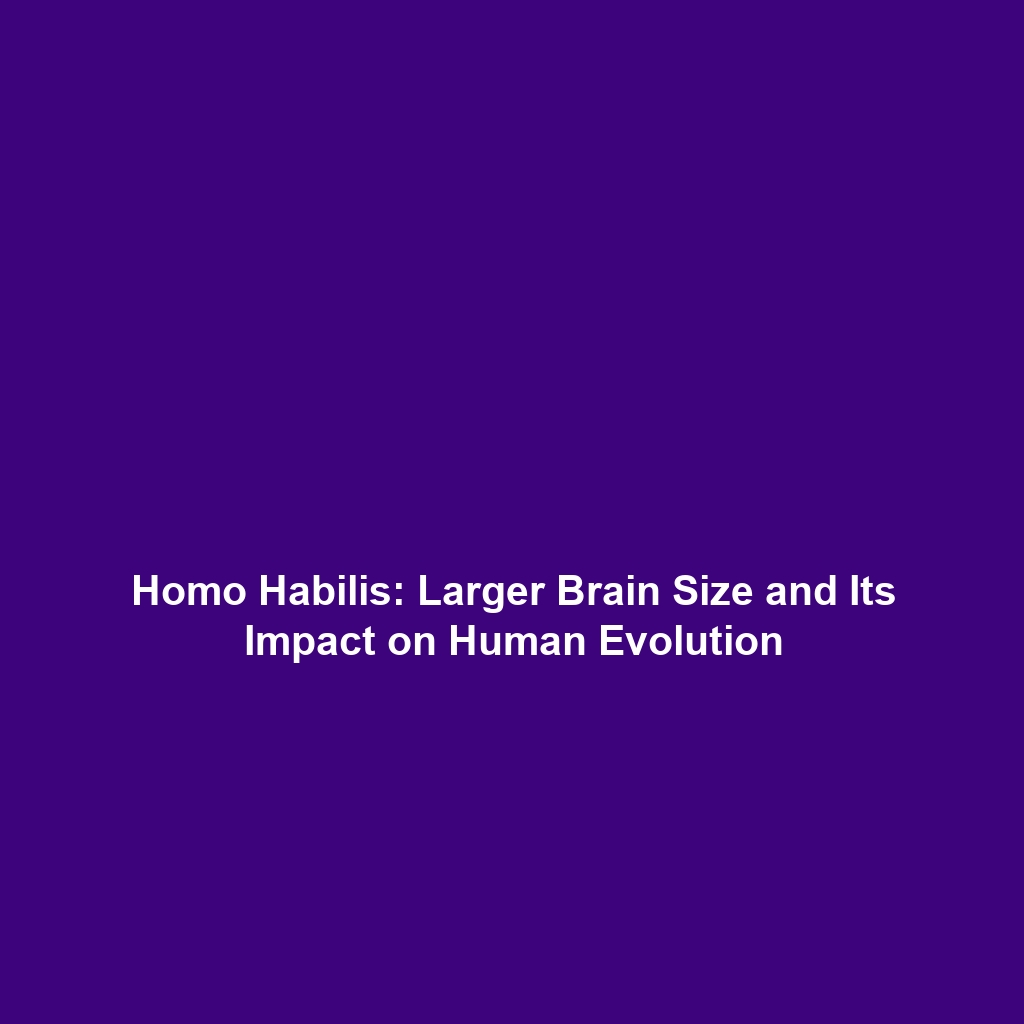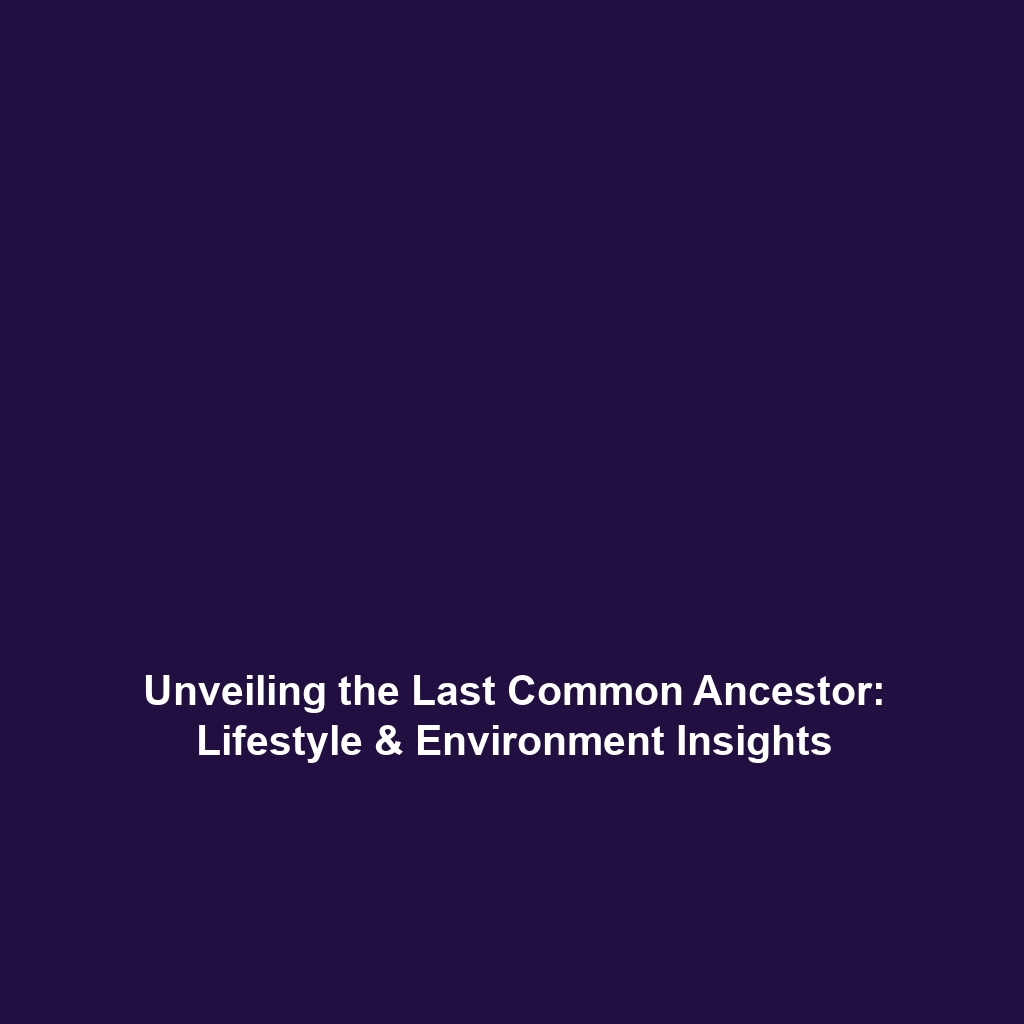Brain Size in Homo Habilis: A Significant Step in Human Evolution
Introduction
The evolution of the human brain has long fascinated scientists, and one notable milestone in this journey is the emergence of Homo habilis. Marked by an increase in brain size compared to earlier hominins, Homo habilis represents a pivotal moment in the story of human evolution. This development is not just a mere anatomical change; it signifies enhanced cognitive abilities and adaptability, ultimately contributing to the evolution of modern humans. Understanding this transition is crucial for comprehending the complexities of our evolutionary lineage.
Key Concepts
Brain Size and Cognitive Development
The increase in brain size in Homo habilis, which averaged about 510 to 600 cubic centimeters, showcases a key trend in human evolution. It demonstrates a shift towards increased cognitive capabilities, including problem-solving and tool-making skills. This increase is significant when considering the following:
- Comparative Analysis: Homo habilis had a larger brain than its predecessors, such as Australopithecus, whose average cranial capacity was around 400 to 500 cubic centimeters.
- Tool Use: With a larger brain, Homo habilis was better equipped for complex tool-making, paving the way for later hominins.
- Survival Skills: Enhanced cognitive capabilities provided an advantage in survival strategies and social interactions.
Applications and Real-World Uses
The study of brain size in Homo habilis has significant implications for understanding human evolution. Here are a few ways this knowledge is applied:
- Anthropological Research: Scholars utilize findings related to brain size to re-evaluate human ancestry and migration patterns.
- Psychological Insights: Understanding brain evolution helps in comprehending modern human behavior and cognitive diversity.
- Educational Programs: Insights from human evolution inform educational strategies focusing on evolutionary biology.
Current Challenges
While studying Homo habilis and its larger brain size offers exciting insights, several challenges persist in this field:
- Fossil Limitations: The fossil record is incomplete, making it difficult to assess brain size variation accurately.
- Technological Constraints: Current scanning techniques may not reveal the full complexity of brain structure in ancient hominins.
- Interpretational Issues: Differentiating causation and correlation between brain size and cognitive abilities invites speculation.
Future Research and Innovations
The future of research surrounding the brain size of Homo habilis and its implications for human evolution appears promising. Emerging technologies and methodologies are likely to drive significant breakthroughs:
- Advanced Imaging Techniques: Innovations in imaging can provide new insights into brain morphology.
- Genetic Studies: Exploring genetic markers associated with brain size can illuminate pathways of cognitive evolution.
- Interdisciplinary Approaches: Collaborations among archaeologists, geneticists, and cognitive scientists are essential for holistic understanding.
Conclusion
The larger brain size of Homo habilis marks a significant step in the trajectory of human evolution, catalyzing the development of sophisticated cognitive abilities that continue to define modern humanity. As research continues to evolve, the implications of these findings reach far beyond anthropology, influencing fields such as psychology and education. For further exploration of how brain size impacts human evolution, consider reading our articles on the evolution of tool-making and the cognitive capabilities of ancient species.









